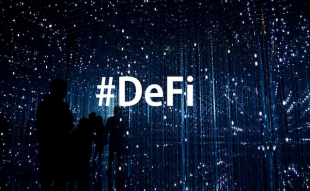Join Our Telegram channel to stay up to date on breaking news coverage
A question often asked is whether donating NFTs to charity can constitute a tax deduction, and under what circumstances. This article attempts to describe that, as it applies to current rules in the U.S.
The IRS may choose to handle various people who donate NFTs in different ways, much like it does with contributions of fine art. When it comes to value and deductions, creators and dealers could fall into a distinct category than collectors and individual consumers.
A creator in this scenario is the individual or organization who develops the NFT and has it tokenized or minted on the blockchain. A dealer is a person or organization that has merchandise available for consumer purchase. A collector is a subsequent owner who keeps the property but does not use it for their regular business. They can have a certain area of specialty and own multiple NFTs. A personal user is similar to a collector in that they are successive owners who are not engaged in the trade in NFTs; instead, they are more likely to be one-off owners.
NFTs will probably be taxed as ordinary assets for creators and dealers, which means ordinary earnings and losses. Because the tax-paying creator utilized her own labor to create the “thing,” or because it was prepared or manufactured for the taxpayer, an NFT is viewed by a creator like a patent, a work of art, or a copyright. The same holds true for the dealer of NFTs since it is kept as inventory or is available for sale to a customer during regular business hours.
The deduction would probably be handled in the majority of cases similarly to how art, music, or other comparable assets would be handled for creators who wish to contribute an NFT to charity. In some circumstances, the creator is not permitted to deduct the contribution’s fair market value. The expenditures paid for tokenizing (or minting) the NFT are likely included in the list of expenses because artists are often only allowed to write off the costs of the materials used in the creation of the artwork, not the time or effort involved.
Collectors or Private Users: A Different Category
However, a creator is typically considered differently from a collector or a private user. These owners’ NFTs would presumably be classified as capital assets instead. If an owner keeps the item for a longer period of time than a year, they can turn it into a “long-term” capital asset. As is typically the case with intangible assets, the taxing treatment of NFTs is subject to a number of circumstances. If the taxpayer had a specific purpose in mind when she purchased the NFT, that will determine whether the NFT is a collectible or a personal asset (meaning, not held for investment purposes).
NFTs that resemble works of art might likewise be considered collectibles. The Code gives collectibles a special level of consideration. Even if held for longer than a year, collectibles have a higher maximum rate of 28% even if the top tax rate for most capital assets is 20%. However, if an NFT also has other qualities, it might not be a collectible in other cases. The NFT may instead be categorized as subject to standard capital gain tax rates if it is associated with a physical object (such as Mintable’s NFT Auction of “Abstract Composition”) or offers some other access or membership experience akin to a club, viz the Bored Ape Yacht Club.
Another issue to think about is whether the NFT would turn into a tangible asset if it were treated as a collectible, since collectibles are often handled in accordance with the laws governing gifts of tangibles. And if so, would the related-use requirements apply to that gift? And if that were the case, how could a charity adhere to the related-use rule? Otherwise, the donor’s options would be restricted to the deduction’s basis.
It’s crucial to comprehend “associated use” if the artwork is stored on the blockchain. A donation to a museum or other institution of higher learning was an excellent option to check the related-use box when it came to “regular” artwork, such as a painting, sculpture, carving, photograph, etc. The charity may utilize the donation to expand its physical collection, use it as a teaching tool, etc. These features might still be accessible, but they might come under closer examination by the taxing authority.
Related
Join Our Telegram channel to stay up to date on breaking news coverage


